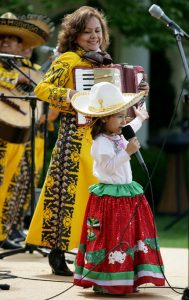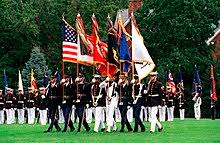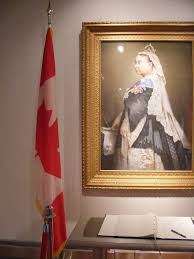Great Happenings In May

Cinco de Mayo: May 5

Cinco de Mayo is an annual celebration held on May 5. The date is observed to commemorate the Mexican Army’s victory over the French Empire at the Battle of Puebla, on May 5, 1862, under the leadership of General Ignacio Zaragoza. The victory of the smaller Mexican force against a larger French force was a boost to morale for the Mexicans. Zaragoza died months after the battle due to illness. A year after the battle, a larger French force defeated the Mexican army at the Second Battle of Puebla, and Mexico City soon fell to the invaders.
In the United States, Cinco de Mayo has taken on a significance beyond that in Mexico. More popularly celebrated in the United States than Mexico, the date has become associated with the celebration of Mexican-American culture. These celebrations began in California, where they have been observed annually since 1863. The day gained nationwide popularity in the 1980s thanks especially to advertising campaigns by beer and wine companies. Today, Cinco de Mayo generates beer sales on par with the Super Bowl.
National Day Of Prayer: May 7
 The National Day of Prayer is an annual day of observance held on the first Thursday of May, designated by the United States Congress, when people are asked “to turn to God in prayer and meditation”. The president is required by law (36 U.S.C. § 119) to sign a proclamation each year, encouraging all Americans to pray on this day.[1][2]
The National Day of Prayer is an annual day of observance held on the first Thursday of May, designated by the United States Congress, when people are asked “to turn to God in prayer and meditation”. The president is required by law (36 U.S.C. § 119) to sign a proclamation each year, encouraging all Americans to pray on this day.[1][2]
The modern law formalizing its annual observance was enacted in 1952, although earlier days of fasting and prayer had been established by the Second Continental Congress from 1775 until 1783, and by President John Adams in 1798 and 1799. Thomas Jefferson established a day of prayer and thanksgiving, but this occurred while he served as governor of Virginia.
The constitutionality of the National Day of Prayer was unsuccessfully challenged in court by the Freedom From Religion Foundation after their first attempt was unanimously dismissed by a federal appellate court in April 2011.
Mother’s Day: May 10
 Mother’s Day is a celebration honoring the mother of the family, as well as motherhood, maternal bonds, and the influence of mothers in society. It is celebrated on various days in many parts of the world, most commonly in the months of March or May. It complements similar celebrations honoring family members, such as Father’s Day, Siblings Day, and Grandparents Day.
Mother’s Day is a celebration honoring the mother of the family, as well as motherhood, maternal bonds, and the influence of mothers in society. It is celebrated on various days in many parts of the world, most commonly in the months of March or May. It complements similar celebrations honoring family members, such as Father’s Day, Siblings Day, and Grandparents Day.
The modern Mother’s Day began in the United States, at the initiative of Anna Jarvis in the early 20th century. This is not (directly) related to the many traditional celebrations of mothers and motherhood that have existed throughout the world over thousands of years, such as the Greek cult to Cybele, Rhea the Great Mother of the Gods, the Roman festival of Hilaria, or the Christian Mothering Sunday celebration (originally a commemoration of Mother Church, not motherhood). However, in some countries, Mother’s Day is still synonymous with these older traditions.[5]
The U.S.-derived modern version of Mother’s Day has been criticized for having become too commercialized. Founder Jarvis herself regretted this commercialism and expressed views on how that was never her intention.
Establishment Of The Holiday
The modern holiday of Mother’s Day was first celebrated in 1908, when Anna Jarvis held a memorial for her mother at St Andrew’s Methodist Church in Grafton, West Virginia. St Andrew’s Methodist Church now holds the International Mother’s Day Shrine. Her campaign to make Mother’s Day a recognized holiday in the United States began in 1905, the year her mother, Ann Reeves Jarvis, died.
Ann Jarvis had been a peace activist who cared for wounded soldiers on both sides of the American Civil War, and created Mother’s Day Work Clubs to address public health issues. Anna Jarvis wanted to honor her mother by continuing the work she started and to set aside a day to honor all mothers because she believed a mother is “the person who has done more for you than anyone in the world”.
In 1908, the U.S. Congress rejected a proposal to make Mother’s Day an official holiday, joking that they would also have to proclaim a “Mother-in-law’s Day”. However, owing to the efforts of Anna Jarvis, by 1911 all U.S. states observed the holiday, with some of them officially recognizing Mother’s Day as a local holiday (the first being West Virginia, Jarvis’ home state, in 1910). In 1914, Woodrow Wilson signed a proclamation designating Mother’s Day, held on the second Sunday in May, as a national holiday to honor mothers.
Although Jarvis was successful in founding Mother’s Day, she became resentful of the commercialization of the holiday. By the early 1920s, Hallmark Cards and other companies had started selling Mother’s Day cards. Jarvis believed that the companies had misinterpreted and exploited the idea of Mother’s Day, and that the emphasis of the holiday was on sentiment, not profit. As a result, she organized boycotts of Mother’s Day, and threatened to issue lawsuits against the companies involved.
Jarvis argued that people should appreciate and honor their mothers through handwritten letters expressing their love and gratitude, instead of buying gifts and pre-made cards. Jarvis protested at a candy makers’ convention in Philadelphia in 1923, and at a meeting of American War Mothers in 1925. By this time, carnations had become associated with Mother’s Day, and the selling of carnations by the American War Mothers to raise money angered Jarvis, who was arrested for disturbing the peace.
Spelling
In 1912 Anna Jarvis trademarked the phrase “Second Sunday in May, Mother’s Day, Anna Jarvis, Founder”, and created the Mother’s Day International Association. She specifically noted that “Mother’s” should “be a singular possessive, for each family to honor its own mother, not a plural possessive commemorating all mothers in the world.” This is also the spelling used by U.S. President Woodrow Wilson in his 1914 presidential proclamation, by the U.S. Congress in relevant bills, and by various U.S. presidents in their proclamations concerning Mother’s Day.
Dates Around The World
While the United States holiday was adopted by some other countries, existing celebrations, held on different dates, honoring motherhood have become described as “Mother’s Day”, such as Mothering Sunday in the United Kingdom or, in Greece, the Eastern Orthodox celebration of the presentation of Jesus Christ to the temple February of Julian Calendar). Both the secular and religious Mother Day are present in Greece. Mothering Sunday is often referred to as “Mother’s Day” even though it is an unrelated celebration.
In some countries, the date adopted is one significant to the majority religion, such as Virgin Mary Day in Catholic countries. Other countries selected a date with historical significance. For example, Bolivia’s Mother’s Day is a fixed date, remembering of a battle in which women participated to defend their children..
Some countries, such as Russia, celebrated International Women’s Day instead of Mother’s Day or simply celebrate both holidays, which is the custom in Ukraine. Kyrgyzstan has recently introduced Mother’s Day, but “year on year International Women’s Day is certainly increasing in status”.
Armed Forces Day: May 16
 Many nations around the world observe some kind of Armed Forces Day to honor their military forces. It is celebrated in the United States as a day to appreciate all active duty service members. This day is not to be confused with Veterans Day or Memorial Day.
Many nations around the world observe some kind of Armed Forces Day to honor their military forces. It is celebrated in the United States as a day to appreciate all active duty service members. This day is not to be confused with Veterans Day or Memorial Day.
Victoria Day (Canada): May 18
 Victoria Day (French: Fête de la Reine, [lit. “Celebration of the Queen”]) is a federal Canadian public holiday celebrated on the last Monday preceding May 25, in honor of Queen Victoria’s birthday.The date is simultaneously that on which the current Canadian sovereign’s official birthday is recognized. It is celebrated on the last Monday preceding May 25.
Victoria Day (French: Fête de la Reine, [lit. “Celebration of the Queen”]) is a federal Canadian public holiday celebrated on the last Monday preceding May 25, in honor of Queen Victoria’s birthday.The date is simultaneously that on which the current Canadian sovereign’s official birthday is recognized. It is celebrated on the last Monday preceding May 25.
Victoria Day is a Canadian tradition and doesn’t actually exist in most of England. But it is celebrated in parts of Scotland, especially Edinburgh, where it remains an official holiday.
Memorial Day: May 25/30
(Memorial Day is considered the unofficial start of summer in the United States, while Labor Day marks the unofficial start of autumn on the first Monday of September.)
Memorial Day is a national holiday in the United States. It is also a state holiday in many states. The holiday honors troops who have died in past wars like World War I and the Korean War. Memorial Day was first held in 1865 after the American Civil War. It was called Decoration Day at that time.
The holiday was first called Memorial Day in 1882, and became a federal holiday in 1967. On June 28, 1968, the United States Congress made a law that said that the official Memorial Day holiday is May 30, but that Memorial Day was to be observed by Federal Employees as a paid holiday on the last Monday in May. It was founded by John A. Logan(General).He fought in the Civil and Mexican–American War.
Memorial Day is an American holiday, observed on the last Monday of May, honoring the men and women who died while serving in the U.S. military. Originally known as Decoration Day, it originated in the years following the Civil War and became an official federal holiday in 1971. Many Americans observe Memorial Day by visiting cemeteries or memorials, holding family gatherings and participating in parades.
Early Observances Of Memorial Day
The Civil War, which ended in the spring of 1865, claimed more lives than any conflict in U.S. history and required the establishment of the country’s first national cemeteries.By the late 1860s, Americans in various towns and cities had begun holding springtime tributes to these countless fallen soldiers, decorating their graves with flowers and reciting prayers.
Each year on Memorial Day a national moment of remembrance takes place at 3:00 p.m. local time. It is unclear where exactly this tradition originated; numerous different communities may have independently initiated the memorial gatherings. And some records show that one of the earliest Memorial Day commemoration was organized by a group of freed slaves in Charleston, S.C., less than a month after the Confederacy surrendered in 1865.
Nevertheless, in 1966 the federal government declared Waterloo, N.Y., the official birthplace of Memorial Day.Waterloo—which first celebrated the day on May 5, 1866—was chosen because it hosted an annual, community-wide event, during which businesses closed and residents decorated the graves of soldiers with flowers and flags.
Decoration Day
On May 5, 1868, General John A. Logan, leader of an organization for Northern Civil War veterans, called for a nationwide day of remembrance later that month. “The 30th of May, 1868, is designated for the purpose of strewing with flowers, or otherwise decorating the graves of comrades who died in defense of their country during the late rebellion, and whose bodies now lie in almost every city, village and hamlet churchyard in the land,” he proclaimed.
The date of Decoration Day, as he called it, was chosen because it wasn’t the anniversary of any particular battle.
On the first Decoration Day, General James Garfield made a speech at Arlington National Cemetery, and 5,000 participants decorated the graves of the 20,000 Union and Confederate soldiers buried there.
Many Northern states held similar commemorative events and reprised the tradition in subsequent years; by 1890 each one had made Decoration Day an official state holiday.
Confederate Memorial Day
Southern states, on the other hand, continued to honor their dead on separate days until after World War I.
Confederate Memorial Day is still celebrated in several states and will be on Sunday, April 26, 2020 in Florida; on Monday, April 27, 2020 in Alabama, Georgia and Mississippi and on May 11, 2020, in parts of South Carolina.
The practice of commemorating the Confederacy became even more controversial after massacre at Emanuel AME Church in Charleston in 2015
History Of Memorial Day
Memorial Day, as Decoration Day gradually came to be known, originally honored only those lost while fighting in the Civil War. But during World War I the United States found itself embroiled in another major conflict, and the holiday evolved to commemorate American military personnel who died in all wars, including World War II, The Vietnam War, The Korean War and the wars in Iraq and Afghanistan.
For decades, Memorial Day continued to be observed on May 30, the date Logan had selected for the first Decoration Day. But in 1968 Congress passed the Uniform Monday Holiday Act, which established Memorial Day as the last Monday in May in order to create a three-day weekend for federal employees; the change went into effect in 1971. The same law also declared Memorial Day a federal holiday.
Memorial Day Traditions
Cities and towns across the United States host Memorial Day parades each year, often incorporating military personnel and members of veterans’ organizations. Some of the largest parades take place in Chicago, New York and Washington, D.C.
Americans also observe Memorial Day by visiting cemeteries and memorials. Some people wear a red poppy in remembrance of those fallen in war—a tradition that began with a World War I poem, “In Flanders Fields”. On a less somber note, many people take weekend trips or throw parties and barbecues on the holiday, perhaps because Memorial Day weekend—the long weekend comprising the Saturday and Sunday before Memorial Day and Memorial Day itself—unofficially marks the beginning of summer.
‘Where Poppies Grow’
Lieutenant Colonel John McCrae, a Canadian who served as a brigade surgeon for an Allied artillery unit, spotted a cluster of poppies that spring, shortly after the Second Battle of Ypres. McCrae tended to the wounded and got a firsthand look at the carnage of that clash, in which the Germans unleashed lethal chlorine gas for the first time in the war.
Some 87,000 Allied soldiers were killed, wounded or went missing in the battle (as well as 37,000 on the German side); a friend of McCrae’s, Lieutenant Alexis Helmer, was among the dead.Struck by the sight of bright red blooms on broken ground, McCrae wrote a poem, “In Flanders Fields,” in which he channeled the voice of the fallen soldiers buried under those hardy poppies.
Published in Punch magazine in late 1915, the poem would be used at countless memorial ceremonies, and became one of the most famous works of art to emerge from the Great War. Its fame had spread far and wide by the time McCrae himself died, from pneumonia and meningitis, in January 1918.
In Flanders Fields by John McCrae
In Flanders fields the poppies blow
Between the crosses, row on row,
That mark our place; and in the sky
The larks, still bravely singing, fly
Scarce heard amid the guns below.
We are the Dead. Short days ago
We lived, felt dawn, saw sunset glow,
Loved and were loved, and now we lie
In Flanders fields.
Take up our quarrel with the foe:
To you from failing hands we throw
The torch; be yours to hold it high.
If ye break faith with us who die
We shall not sleep, though poppies grow
In Flanders fields.































